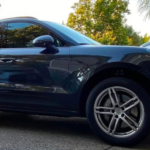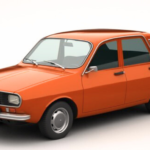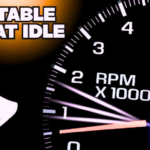The Yamaha RX100: A Timeless Icon of Motorcycling
The Yamaha RX100 is a motorcycle that continues to evoke a sense of nostalgia and admiration among bike enthusiasts worldwide. yamaha rx100 First introduced in the mid-1980s, this 98cc two-stroke machine quickly became a favorite, especially in India, where it gained widespread popularity. Its performance, lightweight design,
and unforgettable engine sound made it a standout in a market that was previously dominated by more conservative and bulky bikes. In this blog post, we explore the history, specifications, riding experience, and the lasting legacy of the Yamaha RX100, a bike that still captures the imaginations of motorcycling aficionados decades after its production ceased.
The Evolution of the Yamaha RX100
In the 1980s, Yamaha sought to carve a niche in the motorcycle market with a compact yet powerful bike that could appeal to young, adventurous riders. Enter the RX100. Released in 1985, it featured a 98cc, two-stroke engine that brought speed and performance to the forefront of the biking scene.
At the time, the RX100’s performance set it apart from its competitors, with its ability to accelerate quickly and deliver a smooth, exhilarating ride. The Yamaha RX100 found its way into the hearts of young riders, especially in India, where it transformed the way people perceived motorcycles.
The RX100 wasn’t just about power; its sharp, modern design was also a huge draw. Unlike other bikes of its time, the RX100 had an aerodynamic look with sleek lines, a compact frame, and a robust yet minimalist build. It quickly became a symbol of style and performance, setting a new benchmark in the world of motorcycles.
Key Specifications of the Yamaha RX100
The Yamaha RX100 was powered by a 98cc, single-cylinder, two-stroke engine that was designed for high performance and efficiency. Despite its small displacement, the bike boasted impressive acceleration and power. The engine was paired with a five-speed manual transmission, which allowed for smooth gear shifts, enhancing the overall riding experience.
Here’s an overview of the Yamaha RX100’s specifications:
- Engine Type: 98cc, Single-cylinder, Two-stroke, Air-cooled
- Power Output: 11 bhp at 7,500 rpm
- Torque: 10.4 Nm at 6,000 rpm
- Transmission: 5-speed manual
- Top Speed: Approximately 100 km/h
- Fuel Tank Capacity: 10 liters (with 2.5 liters as reserve)
- Suspension (Front): Telescopic Fork
- Suspension (Rear): Dual Shock Absorbers
- Brakes (Front): Drum
- Brakes (Rear): Drum
- Dry Weight: Around 98 kg
With its engine output of 11 bhp, the RX100 was not just a small commuter bike but a genuine performer. The two-stroke engine, despite its small size, offered rapid acceleration and quick throttle response. This made the bike incredibly fun to ride, whether in city traffic or on open roads.
Design and Features of the RX100
The Yamaha RX100 stood out for its sporty, compact design, which was a departure from the bulky motorcycles that were common at the time. Its sleek lines, slim fuel tank, and overall compact shape gave it an athletic, agile appearance. The exhaust pipe, or “pipe,” became an iconic feature of the bike, not only adding to its distinctive look but also contributing to the unique engine sound that riders cherished.
The instrument cluster of the RX100 was straightforward and user-friendly, featuring essential elements like a speedometer, fuel gauge, and an odometer. The bike’s low seat height made it accessible to riders of different heights, and its light build made it extremely maneuverable, allowing riders to handle it with ease in various riding conditions.
Riding Experience and Performance
What made the Yamaha RX100 truly special was its outstanding performance on the road. The two-stroke engine was known for its sharp acceleration and quick power delivery, offering a thrilling ride for those behind the handlebars. The RX100 could easily reach a top speed of around 100 km/h, which was impressive for a 98cc engine and a testament to its remarkable engineering.
In terms of handling, the RX100 excelled. Its lightweight frame and responsive suspension made it easy to weave through tight corners and crowded streets. Whether on smooth highways or bumpy city roads, the RX100 maintained its composure, delivering a balanced and smooth ride.
One of the defining characteristics of the RX100 was its unmistakable engine sound. The two-stroke engine produced a high-pitched, throaty growl that became synonymous with the bike, and this sound was one of the reasons riders developed such a deep fondness for it. The bike’s power delivery was seamless, making it enjoyable to ride on both short commutes and longer rides.
The Enduring Legacy of the Yamaha RX100
Though Yamaha discontinued the RX100 in the early 1990s, its impact continues to be felt to this day. The RX100 earned a dedicated fan base, particularly in India, where it played a significant role in shaping motorcycle culture. The bike became a symbol of youthful energy, adventure, and the freedom of the open road.
The RX100 was not just a mode of transport; it was a rite of passage for many young riders. Its combination of affordability, performance, and striking looks made it the perfect first motorcycle for many enthusiasts. The bike was often seen as a stepping stone into the world of motorcycling, and for many, it marked the beginning of a lifelong passion.
Even after production ceased, the RX100 continued to be loved by collectors, bike restorers, and enthusiasts. The simplicity of its design and mechanics made it easy to maintain and modify, which further cemented its place as a cult classic. Vintage RX100s are still sought after by those looking to relive the nostalgia or restore the bike to its former glory.
Why the Yamaha RX100 Still Captivates
Despite the advancements in motorcycle technology, the Yamaha RX100 continues to hold a special place in the hearts of motorcycling fans. Its simplicity is one of the key reasons why it remains so beloved. Unlike modern bikes, which are packed with advanced features and electronics, the RX100 focused on the fundamentals: a lightweight frame, a reliable engine, and a thrilling ride.
For many, the RX100 represents an era of motorcycles that prioritized fun and freedom. It was a bike that could be easily repaired, customized, and tuned by its owners. It was a machine that encouraged riders to learn about mechanics, develop their skills, and build a deep connection with their bikes.
Moreover, the RX100’s cultural significance in India cannot be overlooked. It was one of the first motorcycles that captured the imagination of the youth, particularly in a time when motorcycles were seen as a utilitarian means of transport. The RX100’s performance and design were ahead of their time, helping to shape the future of motorcycling in the region.
Conclusion
The Yamaha RX100 is not just a motorcycle; it is an icon in the world of motorcycling. With its combination of outstanding performance, classic design, and a unique character, the RX100 continues to be admired by motorcycle enthusiasts across the globe. While newer bikes with more advanced technologies have taken center stage, the RX100 remains a cherished classic, a reminder of the golden age of two-stroke motorcycles.








